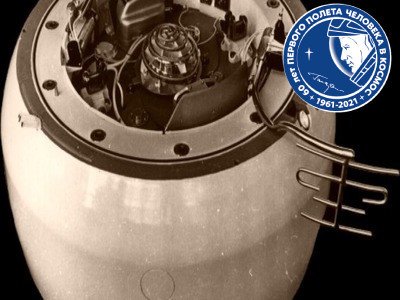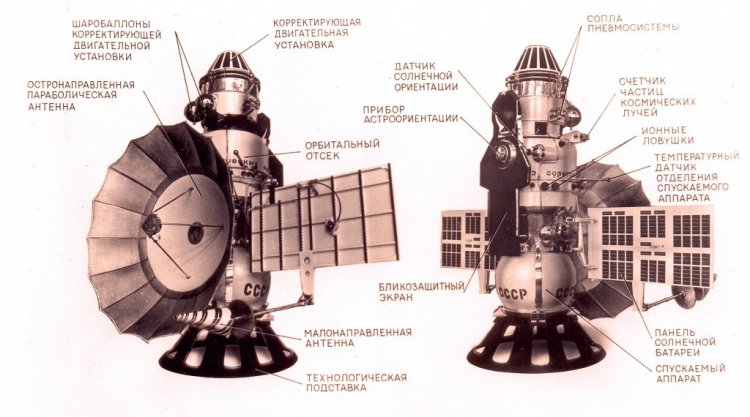Venera 6 is a Soviet automatic interplanetary station, which was launched for the purpose of studying Venus, namely the physical parameters and chemical composition of the planet’s atmosphere. The structure of Venera 6 looked absolutely identical to the one of Venera 5 station. The spacecraft weight amounted to 410 kg. Its orbital compartment represented an airtight container designed for the work in conditions of outer space. The container housed the equipment, instruments and systems of the station servicing it during the Earth-Venus spaceflight. These were, onboard radio complex; thermoregulation and control systems; astronavigation system units; scientific research equipment; power supply system; and chemical sources of electric current. In the course of designing these instrument and systems, the main attention was paid to reliability of the complex’s operation. Along with harsh tests that were carried out with regard to all instruments and systems of the station, the principle of redundancy was widely used in the design of units, instruments and sometimes whole systems. In some cases, and for the most critical places, the designers preferred to apply triple redundancy.
On January 10, 1969, the automatic interplanetary station was launched. On May 17, 1969, after 127 days of flight, Venera 6 successfully reached the surroundings of Venus. The spacecraft entered the planet’s atmosphere at a distance of about 300 km from the location of previous station Venera 5. During the descent, the equipment was measuring temperature, pressure, illumination and chemical composition of the atmosphere. The spacecraft made the total of 70 measurements of pressure and over 50 measurements of temperature. The measurement readings of two stations were different in altitude taking into account equal values of pressure and temperature. This result can be explained by difference (of about 13 km) of relief height at the points of descent, as the distance between the stations amounted to several hundreds of kilometers. The analysis of atmosphere composition showed that Venus consists of Co2 to 97%, nitrogen to 2%, oxygen to 0.1% maximum, and minimum quantity of water vapor. The photometer registered the illumination capacity below the threshold value. Plasma streams (solar wind) were measured in the neighborhood of the planet. The spacecraft stopped transmitting information to the Earth, when the pressure reached the value of 27 atmospheres. Venera 6 station completely accomplished its flight program.
Design of automatic interplanetary systems Venera 5 and Venera 6
Based on open sources.
Source of image in the text and on homepage - History of Soviet missions to Venus























